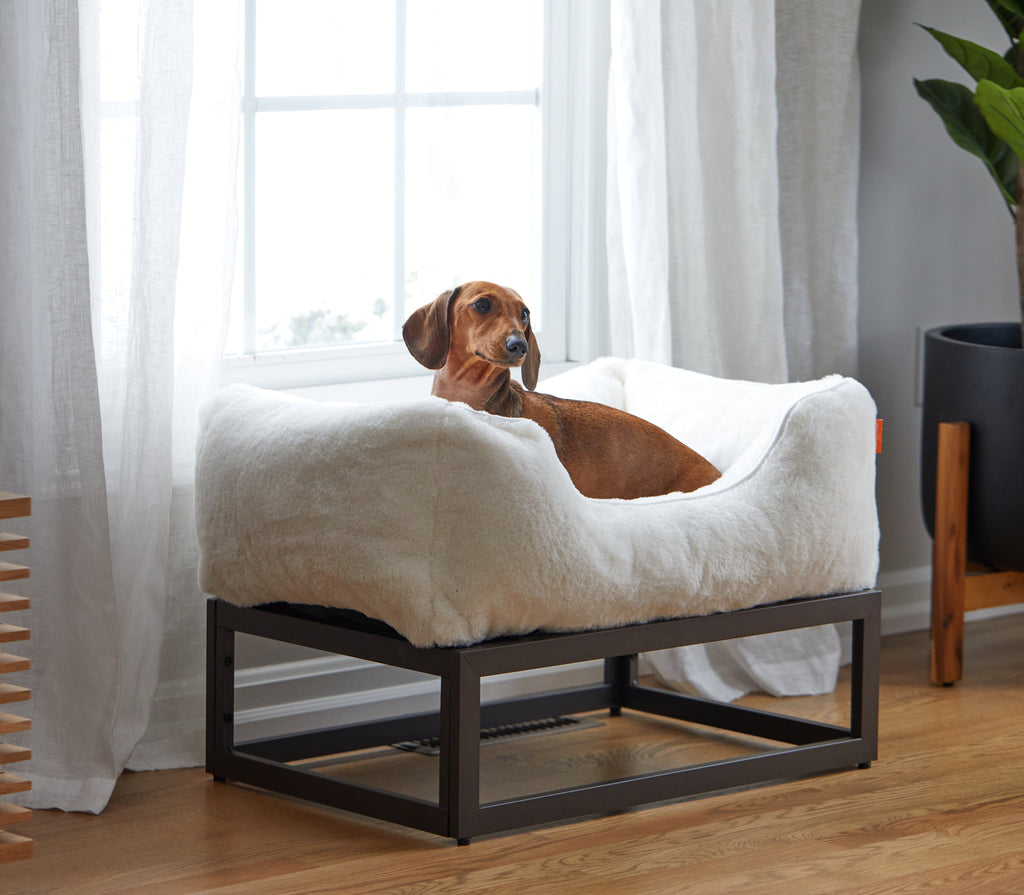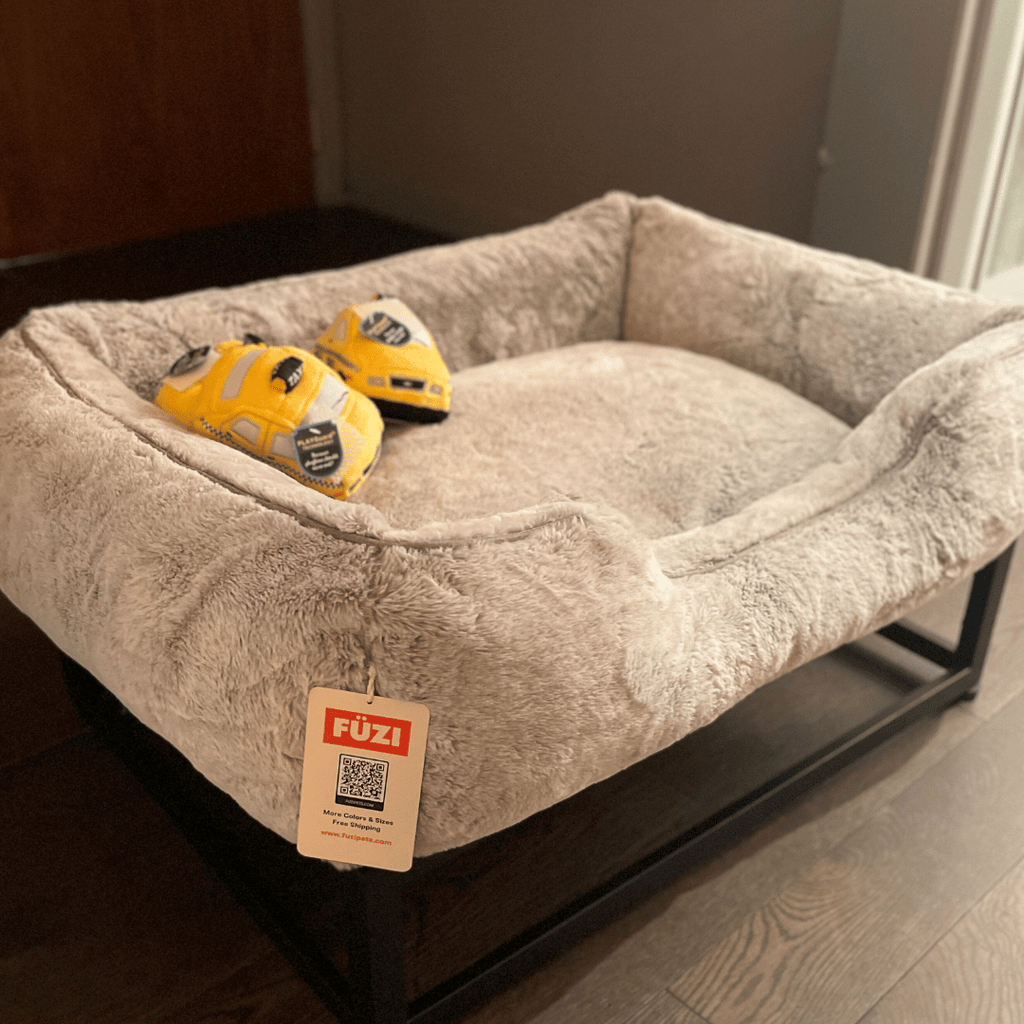Ensuring Safety and Comfort: The Ultimate Guide to Dog Car Seats
Traveling with your furry friend can be an enjoyable experience, but it also comes with its set of challenges, especially when it comes to safety. Dog car seats and dog seatbelts are essential accessories that ensure your pet's safety and comfort during car rides. This guide will explore the various options available, how to choose the best car seat for dogs, and why these accessories are crucial for pet owners.
What are Dog Car Seats?
Dog car seats are specially designed seats that secure your dog in your vehicle, preventing them from moving around and causing distractions. These seats come in various shapes and sizes, catering to different breeds and weights. A dog car seat typically attaches to the car's seatbelt system or has its own set of straps to keep it securely in place. Some models also include additional features like padding, storage pockets, and easy-to-clean materials.
Benefits of Using Dog Car Seats
Using a dog car seat offers numerous benefits:
- Enhanced Safety: Keeps your dog secure and prevents them from moving around, which can distract the driver.
- Comfort: Provides a comfortable space for your dog to relax during the journey.
- Reduced Anxiety: Some dogs feel calmer in a confined space, especially if they can see their surroundings.
- Cleaner Car: Helps contain fur, dirt, and any accidents, keeping your car cleaner.
- Injury Prevention: Protects your dog from being thrown around in case of sudden stops or accidents.
Types of Dog Car Seats
Dog car seats come in various types to cater to different needs and preferences. Understanding these types can help you make an informed decision:
Standard Dog Car Seats
Standard dog car seats are designed to be placed on the car seat, providing a secure area for your dog to sit during travel. They often come with harness attachments that connect to your dog's harness, keeping them safely in place. These seats are ideal for small to medium-sized dogs and can be easily installed in most vehicles.
Dog Car Seat Boosters
Dog car seat boosters elevate your pet, allowing them to look out of the window, reducing anxiety and providing a more enjoyable travel experience. These boosters often come with padded interiors and secure attachments, ensuring your dog remains safe and comfortable throughout the trip. They are especially beneficial for smaller dogs who may not be able to see out of the windows from a regular car seat.
How to Choose the Best Car Seat for Dogs
Selecting the right car seat for your dog is essential to ensure their safety and comfort during car rides. Here are some factors to consider:
Size and Weight Considerations
When choosing a car seat for your dog, size and weight are crucial factors. The seat should be large enough to allow your dog to sit, lie down, and turn around comfortably. However, it shouldn't be so large that your dog can move around too much, as this can be a safety hazard. Always check the manufacturer's weight limits and size recommendations to ensure the seat is appropriate for your pet.
Material and Durability
The material of the dog car seat should be durable and easy to clean. Look for seats made from high-quality, water-resistant fabrics that can withstand wear and tear. Removable, washable covers are a plus, as they make it easier to keep the seat clean. Additionally, padding and cushioning are important for your dog's comfort, especially during long trips.
Ease of Installation
Ease of installation is another critical factor. The best dog car seats are those that can be quickly and securely installed in your vehicle. Look for seats that come with clear instructions and require minimal effort to set up. Ensure that the seat can be firmly attached to the car's seatbelt system or has its own secure straps.
The Importance of Dog Seatbelts
Dog seatbelts are crucial for ensuring your pet's safety during car rides. They prevent your dog from moving around the vehicle, which can be distracting and dangerous for the driver. In the event of a sudden stop or accident, a properly secured dog seatbelt can prevent your pet from being thrown around or injured.
How to Properly Use a Dog Seatbelt
Using a dog seatbelt correctly is vital for it to be effective. Here are some steps to ensure proper usage:
- Choose the Right Type: Select a dog seatbelt that is compatible with your car seat and fits your dog's size and weight.
- Securely Attach: Attach the seatbelt to your dog's harness, not their collar, to prevent choking or neck injuries.
- Adjust for Comfort: Ensure the seatbelt is adjusted to allow your dog some movement while still keeping them securely in place.
Combining Car Seats and Seatbelts for Maximum Safety
For the highest level of safety, it's best to use a combination of dog car seats and seatbelts. This setup ensures that your dog is securely fastened and comfortable throughout the journey. The car seat provides a confined space for your dog, while the seatbelt ensures they remain securely in place.
Dog Car Seat Boosters: Elevating Safety and Comfort
Dog car seat boosters not only elevate your pet for a better view but also enhance their overall travel experience. These boosters can help reduce anxiety by allowing your dog to see out the window, making the trip more enjoyable for them. Additionally, the elevated position can prevent motion sickness in some dogs.
DIY Dog Car Seats: Pros and Cons
Creating a DIY dog car seat can be an appealing option for some pet owners. Here are the pros and cons:
Pros:
- Cost-effective: DIY car seats can be cheaper than store-bought options.
- Customization: You can tailor the seat to fit your dog's specific needs and preferences.
Cons:
- Safety Concerns: DIY seats may not be as secure as professionally made ones.
- Time-consuming: Building a car seat requires time and effort.
Traveling Tips for Pet Owners
Traveling with your pet requires preparation and attention to detail. Here are some tips to ensure a smooth trip:
Pre-trip Preparations
- Familiarize Your Dog: Allow your dog to get used to the car seat before the trip.
- Pack Essentials: Bring along your dog's favorite toys, blankets, and treats.
- Plan Breaks: Schedule regular stops for bathroom breaks and exercise.
During the Trip
- Maintain Comfort: Keep the car at a comfortable temperature and provide water to keep your dog hydrated.
- Monitor Your Pet: Check on your dog regularly to ensure they are comfortable and not stressed.
Post-trip Care
- Check for Signs of Stress: After the trip, watch for any signs of travel stress or discomfort in your dog.
- Clean the Car Seat: Remove and wash the car seat cover if necessary.
Legal Requirements for Pet Travel
Different regions have varying legal requirements for traveling with pets. It's important to familiarize yourself with these laws to ensure compliance. Some places may require pets to be restrained in the car, either in a car seat or with a seatbelt.
Common Mistakes to Avoid
Avoid these common mistakes to ensure a safe and enjoyable trip with your pet:
- Using the Wrong Size Car Seat: Ensure the car seat is appropriate for your dog's size and weight.
- Not Using a Harness: Always attach the seatbelt to a harness, not a collar.
- Ignoring Installation Instructions: Follow the manufacturer's instructions for installing the car seat and seatbelt.
Frequently Asked Questions (FAQs)
Q: Can I use a regular car seat for my dog?
A: No, regular car seats are not designed for dogs and may not provide adequate safety.
Q: How often should I take breaks during a long trip?
A: It's recommended to take breaks every 2-3 hours to let your dog stretch and use the bathroom.
Q: Are dog car seats necessary for short trips?
A: Yes, even short trips can be dangerous without proper restraints for your pet.
Q: Can I wash my dog's car seat?
A: Most dog car seats come with removable, washable covers. Check the manufacturer's instructions for specific cleaning guidelines.
Q: What is the best type of harness to use with a dog seatbelt?
A: A padded harness that fits securely and comfortably is the best choice for use with a dog seatbelt.
Conclusion
Using dog car seats and seatbelts is essential for ensuring your pet's safety and comfort during car rides. By choosing the right products and following proper usage guidelines, you can make every trip with your furry friend a safe and enjoyable experience. Prioritize your pet's well-being by investing in high-quality dog car seats and seatbelts, and always stay informed about the latest safety practices.







